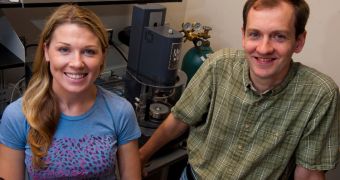In a significant advancements that could lead to improvements in tissue engineering, cosmetics and reconstructive surgery, experts at the Rice University managed to develop a new method for producing the synthetic form of a very common protein in the human body, collagen.
This molecule is tremendously important because it makes up huge chunks of tissues such as blood vessels, cartilages, tendons, skin and ligaments. This has made collagen a prime target for companies that develop skin-care products and other cosmetics.
In the field of regenerative medicine, investigators combine stem cells derived from the patients themselves with collagen-like materials, in order to develop replacement tissues. This comes in very handy when treating burn victims, for example.
Building tissue scaffolds is also possible with this naturally-occurring molecule. For instance, a great deal of effort nowadays goes towards creating the scaffolding for the heart muscle, and then populating it with stem cells. The new organs can then be implanted without fear of rejection.
Rice experts say that their newest material replicates the structure and function of collagen to the letter. Significant amounts of the stuff can be produced in as little as an hour, form a special type of liquid.
“Our work is significant in two ways. Our final product more closely resembles native collagen than anything that's previously been made, and we make that material using a self-assembly process that is remarkably similar to processes found in nature,” researcher Jeffrey Hartgerink explains.
The expert, who holds an appointment as an associate professor of chemistry and of bioengineering, is also the lead author of a new paper detailing the findings. The work is published in the latest issue of the top scientific journal Nature Chemistry.
The new study was made possible by funds secured from the US National Science Foundation (NSF), the Robert A. Welch Foundation and the Norman Hackerman Advanced Research Program of Texas.
Remarkably, the new form of collagen carries no immunological risks, like collagen derived from animal tissue does. This alone could expand the potential uses for the new material by a wide margin.
One of the properties of the new material that the research team is particularly proud of is the fact that the same enzyme that breaks down natural collagen in the human body can also break down their new compound.
What this implies is that the novel material could be used in biological applications without fear of accumulation or rejection.

 14 DAY TRIAL //
14 DAY TRIAL //